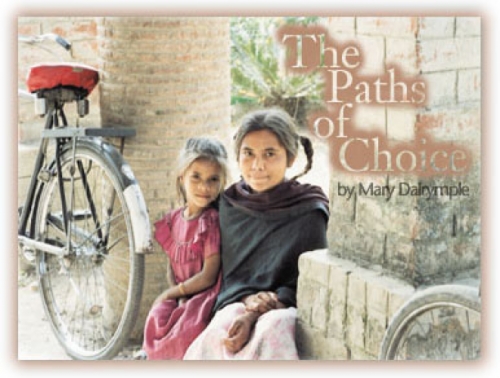Nang Rong is not a place you can easily find on a map. It’s one of the poorest districts in Thailand, a flat, remote area 220 miles northeast of Bangkok near the Cambodian border.
The region’s soil, poorly suited for intensive agriculture, still supports paddy rice. Most of the villagers are subsistence farmers, growing one crop a year in rain-fed fields. And in the summer, monsoons blow rain and wind in from the Indian Ocean, sometimes washing out whole sections of the district. It’s not unusual for the temperature to rise over 100 degrees.
“It’s a hot, hot sun,” Barbara Entwisle says.
Entwisle, professor of sociology, and her collaborators have turned this rural region of Thailand into a kind of laboratory for studying human behavior. The research group—Entwisle, Ronald R. Rindfuss, professor of sociology, and Stephen J. Walsh, professor of geography, along with Thai colleagues Aphichat Chamratrithirong and Yothin Sawangdee—have a theory. They believe that couples will choose to use contraception and other family-planning services when they have easy access to those services.
And that’s true, according to surveys and focus groups the research group led with village women and elders. Nang Rong’s treacherous travel conditions and scarce resources make it an ideal place to find out whether accessibility encourages couples to use contraception.
But the early findings suggested that well-stocked clinics don’t explain everything. Entwisle wondered, why do some couples choose to use contraception? And why do they choose one method over another? To understand the whole story, Entwisle had to put Nang Rong on a map.
In 1970, the Thai government committed itself to reducing population growth and began to use pre-existing rural health clinics as family-planning outposts, making contraception available to rural women in places like Nang Rong.
“That turned out to be an amazingly successful and smart strategy,” Entwisle says. Using already established outposts made distribution easy. And health workers were already in touch with villagers about all kinds of health issues, including the vaccination of children and water quality.
When the family-planning program first started, local health posts offered only one method of birth control, the pill. Women who chose to use it had to live close enough to a health post to come back frequently for prescription refills. If a woman wanted to use any other method, she had to go to town to get it.
In earlier studies, Entwisle talked to women around Nang Rong and found that having a health center nearby usually led women to choose the pill over other methods.
But not always. Sometimes women chose DeproProvera, an injected hormone that works like the pill. Other women, including women who lived farther from a health clinic, chose to have an IUD inserted. It also appeared as though one method would predominate in a village.
But why? Proximity to a health center couldn’t explain everything. Sometimes women chose to make the trip into town instead of visiting a nearby clinic. Other times, women who lived relatively far from a clinic chose to use the pill.
Entwisle needed a more accurate picture of the Thai countryside, so she turned to a tool used by map makers and sailors—the geographic information system.
The research team went out to each place near Nang Rong that had offered family-planning services and marked the site using the Global Positioning System. After she had longitude-latitude readings for each clinic, she linked that information with survey data, including information about contraception methods used by women in the area. Now, instead of relying on estimates of travel time made by villagers, Entwisle could see the distribution of health clinics and towns and calculate more accurate travel times.
Looking at the map, she also found something she hadn’t seen in the survey data. Independent of travel time and other factors, the quality of roads affects a woman’s contraception choice.
“During monsoon season, it matters a lot whether you’re on a road that’s an all-weather road or you’re on a road that’s just a path or a seasonal road,” she says. A woman probably won’t choose to use a temporary method, such as the pill or an injection, if she knows that summer rains may keep her from reaching the clinic.
Entwisle also found thresholds in travel time that she hadn’t detected before. If it takes a woman less than six minutes to get to a local health outlet—by walking, taking a bus, or hitching a ride on a moped—she will tend to choose a more temporary method. If it takes her longer than six minutes to reach the clinic, she may be more likely to choose an IUD.
These conclusions support Entwisle’s theory that easy access to contraception can encourage people to use it. “Stepping back,” she says, “I think it really shows the importance of a community-based distribution of methods.”
But, more importantly, Entwisle has found that maps offer her a new way to communicate. “A map is a picture,” she explains. “People can touch it and feel it and talk about it.
“We’ve taken maps out into the field in Nang Rong. We’ve gone to headmen who might have four years of education. And we can sit down with them and talk about the quality of the map. It has the power to transcend boundaries.”
Mary Dalrymple was a student who formerly contributed to Endeavors.
Research funded by the U.S. Agency for International Development, the National Science Foundation, and the National Institute of Child Health and Human Development.


